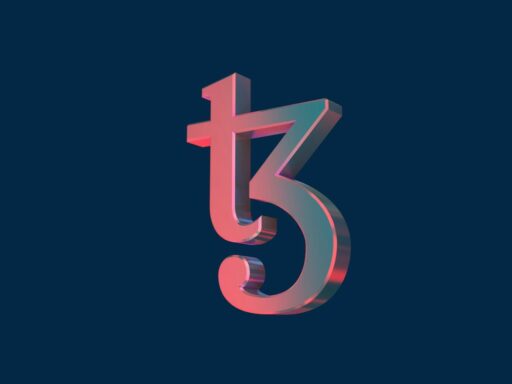In the rapidly evolving world of cryptocurrency trading, selecting the right trading platform is crucial for both novice and experienced traders. The year 2023 has brought forward a plethora of crypto exchanges, each offering unique features, security measures, and trading options. This article aims to dissect the current crypto trading platform landscape, highlighting innovative features, top exchanges, and the future outlook of the crypto market, while also addressing common FAQs to assist traders in making an informed decision.
Key Takeaways
- Crypto.com stands out for its balance of security, coin selection, and competitive fees, making it a top recommendation for traders in 2023.
- Coinbase serves as an accessible entry point for new crypto traders, but faces uncertainties with future regulatory changes.
- Binance remains a major player despite regulatory hurdles, offering a wide range of services and maintaining high liquidity.
- Emerging technologies and the adaptation to regulatory shifts will shape the future of crypto trading platforms.
- When choosing a crypto exchange, prioritize low trading fees, a wide selection of coins, and robust security and regulatory compliance.
Navigating the Crypto Exchange Landscape

Assessing Security and Regulatory Compliance
In the dynamic world of cryptocurrency trading, security and regulatory compliance are paramount. The evolving regulatory landscape is expected to introduce new compliance requirements, offering more security and legitimacy to investors. As the European Union’s MiCA regulation comes into play, we may witness these rules in action, shaping the future of crypto exchanges.
The importance of assessing an exchange’s adherence to security protocols cannot be overstated. A history of unauthorized withdrawals or hacks, like the $34 million incident at Crypto.com, raises red flags. However, the swift replacement of funds and subsequent security improvements are positive indicators of an exchange’s commitment to user safety.
When considering a crypto trading platform, it’s crucial to evaluate their compliance track record and security measures. An exchange that is better on compliance than its competitors can offer a degree of reassurance, but it’s essential to remain vigilant about other potential issues.
Here are some key points to consider when assessing security and regulatory compliance:
- The exchange’s history of security incidents and their resolution
- The clarity and structure of the exchange’s trading fees
- The exchange’s stance on regulatory compliance and its impact on service offerings
- The accessibility and sustainability of the platform’s services
Evaluating Trading Fees and Coin Selection
When choosing a crypto trading platform, two critical factors to consider are the trading fees and the range of coins available. Platforms vary significantly in their fee structures, with some offering lower fees to high-volume traders. For instance, an exchange might charge 0.075% for both maker and taker fees for a 30-day trading volume of less than $250,000, with the fees decreasing as the volume increases, potentially reaching 0% for volumes greater than $10M.
Coin selection is equally important. While all exchanges list popular cryptocurrencies like Bitcoin, a broader asset range can provide opportunities to invest in emerging coins. A platform’s coin selection can be a decisive factor for traders looking to diversify their portfolios.
It’s essential to balance the pursuit of low fees with the need for a diverse selection of tradable coins. This balance ensures that traders can maximize their potential returns while having access to a wide array of investment opportunities.
Here’s a simplified fee structure for a hypothetical exchange based on trading volume:
| 30-day Trading Volume | Maker Fee | Taker Fee |
|---|---|---|
| Less than $250,000 | 0.075% | 0.075% |
| $250,000 to $1M | 0.070% | 0.072% |
| $1M to $5M | 0.065% | 0.069% |
| $5M to $10M | 0.060% | 0.065% |
| Greater than $10M | 0% | 0.05% |
Remember, while fees are a tangible cost, the intangible value of a diverse coin selection should not be underestimated.
Understanding Liquidity and User Experience
When selecting a crypto trading platform, liquidity should be a top consideration. High liquidity ensures that trades can be executed quickly and at stable prices. It’s influenced by factors such as trading volume and the number of active traders. For instance, a high trading volume indicates a steady flow of assets, which is crucial for maintaining liquidity.
User experience is equally important. A platform should be intuitive, responsive, and provide all the necessary tools for effective trading. This includes aspects like ease of access, customer service, and the platform’s overall trustworthiness. A good user experience can significantly reduce the learning curve and enhance trading efficiency.
The synergy between liquidity and user experience defines the overall effectiveness of a crypto trading platform.
Here’s a quick look at how trading fees can vary with trading volume:
| 30-day trading volume | Maker fee | Taker fee |
|---|---|---|
| Less than $50,000 | 0.16% | 0.26% |
| $50,000 to $100,000 | 0.14% | 0.24% |
| $100,000 to $250,000 | 0.12% | 0.22% |
| $250,000 to $500,000 | 0.10% | 0.20% |
| $500,000 to $1M | 0.08% | 0.18% |
| $1M to $2.5M | 0.06% | 0.16% |
| $2.5M to $5M | 0.04% | 0.14% |
| $5M to $10M | 0.02% | 0.12% |
| Greater than $10M | 0% | 0.10% |
Innovative Trading Features on Modern Platforms

The Rise of API and Bot Trading
The integration of APIs and automated trading bots has become a game-changer in the crypto trading sphere. These tools enable traders to execute strategies with precision and speed, often outperforming manual trading. For instance, platforms like OKX have been highlighted as some of the best for bot trading, where pre-programmed bots operate based on specific conditions.
- API Trading: Allows for direct and automated interaction with exchange data and services.
- Trading Bots: Execute trades automatically, based on predefined algorithms and market analysis.
- Social Trading: Connects traders, enabling them to share strategies and mimic successful trades.
- DeFi Trading: Offers decentralized finance options, often integrating with trading bots for enhanced functionality.
The right combination of API integration and bot trading can significantly enhance a trader’s ability to capitalize on market opportunities. It’s not just about automation, but also about the strategic advantage gained through real-time data analysis and decision-making processes.
Exploring Social and DeFi Trading Options
The intersection of social and decentralized finance (DeFi) trading is transforming the crypto landscape. Social trading platforms allow users to follow and copy the trades of experienced investors, democratizing access to trading strategies. Meanwhile, DeFi trading platforms offer a permissionless ecosystem where users can engage in trading without the need for traditional financial intermediaries.
Platforms like Mizar provide a blend of automated trading bots and social trading features, catering to both novice and seasoned traders. On the other hand, Octav focuses on DeFi investments, offering analytics to track and manage portfolios effectively.
- Mizar: Automated trades, copy-trading, positive user reviews.
- Octav: DeFi analytics platform, free and editable database.
The rise of DeFi and social trading options is not just a trend; it’s a shift towards a more inclusive and transparent financial system. These platforms empower individuals by providing tools that were once reserved for financial institutions.
Choosing the right platform depends on individual needs, whether it’s for social interaction, investment tracking, or automated trading. As the DeFi space evolves, it’s crucial to stay informed and select platforms that align with your trading goals and risk tolerance.
The Importance of Portfolio Tracking Tools
In the dynamic world of cryptocurrency, portfolio tracking tools are indispensable for investors seeking to stay informed and make educated decisions. These tools provide a real-time overview of asset performance, enabling users to monitor their investments and respond swiftly to market changes.
- Monitor and Rebalance: Regularly review your portfolio to align with your investment strategy and risk tolerance.
- Stay Informed: Keep abreast of market trends and news that could affect your investments.
- Diversify: Use tracking tools to maintain a diversified portfolio, essential for risk mitigation.
Portfolio trackers are more than just a convenience; they are a critical component of a successful investment strategy, offering insights that can lead to better-informed decisions and potentially higher returns.
While the market offers a variety of portfolio trackers, each with its own set of features, the key is to find one that suits your specific needs. Whether it’s for monitoring asset allocation, rebalancing, or analyzing market trends, the right tool can make all the difference in managing your crypto investments effectively.
Spotlight on Top Crypto Exchanges

Crypto.com: Balancing Safety, Selection, and Fees
Crypto.com stands out in the crowded marketplace for its commitment to balancing safety, selection, and fees. With a clear focus on regulatory compliance, Crypto.com has positioned itself as a reliable platform for users who prioritize security. The exchange’s fee structure is transparent and competitive, with a standard 0.075% maker and taker fee for those trading under $250,000, making it an attractive option for both casual and serious traders.
The platform’s selection of cryptocurrencies caters to a diverse range of investor interests, ensuring that users have access to a variety of digital assets. While the mobile app’s occasional bugs can be a drawback, the overall safety measures in place make Crypto.com a top contender for those seeking a dependable crypto exchange.
Crypto.com’s approach to combining product variety with low fees and robust safety measures from regulation makes it a standout choice in the crypto exchange landscape.
Here’s a quick breakdown of Crypto.com’s trading fees:
| Trading Volume (30-day) | Maker Fee | Taker Fee |
|---|---|---|
| < $250,000 | 0.075% | 0.075% |
| > $250,000 | Variable | Variable |
Coinbase: The Gateway for New Crypto Traders
Coinbase has established itself as a leading platform for newcomers to the cryptocurrency market. Its user-friendly interface simplifies the trading process, making it accessible even to those with no prior experience. The platform’s commitment to compliance and regulatory adherence has been a cornerstone of its global expansion, ensuring a level of reliability amidst a landscape of uncertainty.
Coinbase’s fee structure is competitive, catering to a range of trading volumes with a clear incentive for higher activity. Here’s a quick glance at their fee schedule based on 30-day trading volume:
| 30-day trading volume | Maker fee | Taker fee |
|---|---|---|
| Less than $250,000 | 0.075% | 0.075% |
| $250,000 to $1M | 0.070% | 0.072% |
| $1M to $5M | 0.065% | 0.069% |
| $5M to $10M | 0.060% | 0.065% |
| Greater than $10M | 0% | 0.05% |
Despite its strengths, traders should remain vigilant. The platform’s future, while promising, is not immune to the challenges posed by regulatory shifts. As the SEC tightens its grip, the reliability of Coinbase, like other industry leaders, is tested. Traders are advised to stay informed and consider an exit strategy, as the platform may evolve significantly in the coming years.
While Coinbase is a robust entry point into crypto trading, the evolving regulatory environment necessitates a cautious approach. Keep abreast of the latest developments to navigate the market with confidence.
Binance: Navigating Regulatory Challenges
Binance, the world’s largest crypto exchange, is currently under the microscope of regulatory bodies. The platform has been the target of an SEC lawsuit, which raises concerns about its long-term viability for securely holding crypto assets. Despite these challenges, Binance remains a popular choice due to its high liquidity and extensive selection of coins and trading pairs.
More details about Binance’s offerings include:
- Pricing: 0.1% maker and taker fees for low-tier traders
- Separate platforms: binance.com for global users, binance.us for Americans
- Incentives: Discounts on fees when holding Binance coin (BNB)
Binance’s ability to offer a wide range of products and staking options, especially in the U.S., showcases its adaptability in the face of regulatory pressures.
However, the distinction between Binance and Binance.US is significant, with the latter providing fewer assets and trading pairs due to compliance with U.S. regulations. Traders must navigate these differences while considering the potential impact of ongoing legal proceedings on their investments.
The Future of Crypto Trading Platforms

Adapting to Regulatory Changes
As the crypto exchange landscape evolves, platforms must navigate the complexities of an ever-changing regulatory environment. The shift towards clearer and more structured regulations is imminent, bringing with it a new set of compliance requirements. This transition offers increased security and legitimacy for investors, but also demands that exchanges are agile and adaptable.
- Exchanges must monitor and adjust to legal standards that vary by country.
- Staying informed about market trends is crucial to align with regulatory shifts.
- Implementing risk management strategies becomes even more vital in a regulated market.
The clarity in regulations is expected to enhance investor confidence, but it also requires exchanges to be proactive in adapting their operations and services.
The ability to adapt to these regulatory changes will be a defining factor in the sustainability and success of crypto trading platforms. Those who can effectively manage the balance between compliance and innovation will likely lead the market.
Emerging Technologies and Their Impact
The integration of emerging technologies is reshaping the crypto trading landscape. Discover how Artificial Intelligence is being integrated into crypto platforms, enhancing security, optimizing trading strategies, and predicting market trends. This technological infusion is not only about AI; it extends to advancements in cloud mining and the use of renewable energy sources, which are set to revolutionize the efficiency and sustainability of blockchain operations.
The synergy between technological innovation and crypto trading platforms promises a new era of efficiency and market intelligence.
Here are some key technological trends to watch:
- Breakthroughs in computing power and energy efficiency
- Adoption of cooling technologies and renewable energy sources
- Integration of AI for enhanced security and market prediction
- Development of real-time intelligence systems for global connectivity
As we look beyond 2024, the anticipation for these technologies to mature and become more accessible is palpable. The crypto community is eager to see how these innovations will streamline operations and provide a competitive edge in the ever-evolving digital currency market.
Predictions for the Crypto Exchange Market
As the crypto market continues to evolve, predictions for the future of trading platforms become a topic of keen interest. The remarkable performance of Bitcoin in 2023, with a 156% gain, suggests a bullish outlook for the industry. However, the shadow of past events, such as the collapse of the FTX exchange, looms over the market, reminding investors of the importance of due diligence.
The crypto exchange landscape is expected to undergo significant transformations, with a focus on enhanced security, regulatory compliance, and innovative trading features.
Emerging technologies, such as AI and blockchain advancements, are poised to redefine user experience and security protocols. The integration of these technologies may lead to more personalized and secure trading environments. Additionally, the rise of decentralized finance (DeFi) continues to challenge traditional exchange models, potentially leading to a shift in how users engage with crypto assets.
Looking ahead, the market may witness the introduction of new players and the consolidation of existing ones, as platforms strive to offer a competitive edge. The balance between user-friendliness and advanced trading tools will be crucial in attracting a diverse user base.
Making an Informed Choice: Crypto Exchange FAQs

Determining the Best Exchange for Your Trading Needs
Selecting the right crypto exchange is a critical decision for any trader. Consider the exchange’s security, available cryptocurrencies, and fee structure to ensure it aligns with your trading goals. For instance, while Bittrex may be straightforward, it has been noted for its limited support and coin offerings. In contrast, Binance boasts high liquidity, yet it is grappling with regulatory issues in the US.
- Evaluate the security measures and history of the exchange.
- Check for a wide selection of cryptocurrencies, especially those you intend to trade.
- Compare fee structures, keeping in mind your expected trading volume.
- Consider the user interface and support services for both beginners and advanced traders.
When making your choice, balance the need for a user-friendly platform with the desire for advanced trading features and tools. Remember, no exchange is completely risk-free, so assess the level of acceptable risk for your investments.
It’s also important to recognize that while some exchanges like Coinbase are recommended for investing, they may not suit all types of traders. Always perform your own due diligence before committing to a platform.
Identifying the Safest Crypto Exchanges
In the quest for the safest crypto exchanges, investors must weigh the risks and benefits of each platform. Security is paramount, but it’s also essential to consider the exchange’s track record, regulatory compliance, and the robustness of its security measures.
While no exchange can guarantee absolute safety, certain platforms have established themselves as more secure through their practices and history. For instance, Kraken stands out for not having lost money to theft since its inception in 2011. However, it’s important to note that even the most secure platforms are not immune to risks, and users should always exercise caution.
When evaluating the safety of a crypto exchange, consider its history with security incidents, the strength of its security features, and its compliance with relevant regulations.
Below is a list of exchanges that have been recognized for their security measures:
- Kraken: Notable for its strong security record.
- Gemini: Known for its user-friendly platform and security focus.
- Crypto.com: Balances product offerings with safety from regulatory issues.
Remember, the safest exchange for one investor may not be the same for another. It’s crucial to conduct thorough research and consider your own risk tolerance when making a decision.
The Role of Centralized vs. Decentralized Exchanges
When choosing between centralized (CEX) and decentralized exchanges (DEX), traders must weigh various factors. Centralized exchanges offer a user-friendly experience with higher liquidity, making them suitable for both novice and seasoned investors. However, they often come with higher fees and require trust in the platform’s security measures.
Decentralized exchanges, on the other hand, provide a trustless environment where users retain full control over their funds. This autonomy comes at the cost of a steeper learning curve and generally lower liquidity.
- CEX Advantages: Higher liquidity, user-friendly, more trading pairs.
- DEX Advantages: Full control over funds, no need for trust in a third party.
While both types of exchanges serve the same fundamental purpose, the choice between a CEX and a DEX can significantly impact your trading strategy and risk exposure.
It’s essential to consider the trade-offs between the convenience of CEXs and the self-sovereignty offered by DEXs. Your decision should align with your trading goals, risk tolerance, and the importance you place on security and autonomy.
Conclusion
In the dynamic landscape of cryptocurrency trading, the platforms we’ve discussed stand out for their unique features, security measures, and adaptability to regulatory changes. While no exchange can be endorsed with absolute certainty due to the volatile nature of the crypto market, platforms like Crypto.com, Coinbase, Binance, Gemini, and Kraken have demonstrated a commitment to providing a balance of user-friendly interfaces for newcomers and sophisticated tools for seasoned traders. As the industry evolves, these exchanges offer a blend of low fees, diverse coin offerings, and a level of security that, while not infallible, aims to protect investors’ assets. It’s crucial for traders to remain vigilant, stay informed about market trends, and consider the long-term implications of their trading platform choices. The best crypto trading platform for you will align with your investment strategy, risk tolerance, and feature preferences.
Making an Informed Choice: Crypto Exchange FAQs
Which exchange is currently considered the best for crypto trading?
As of the latest evaluations, Crypto.com is favored for its high liquidity, diverse coin offerings, and reasonably low fees, while also maintaining a safe distance from intense SEC scrutiny.
What is the safest crypto exchange to use?
Kraken stands out as the safest exchange in terms of security from hackers, having had no significant losses to theft since its inception in 2011.
Can I trade cryptocurrency without using a centralized exchange?
Yes, it’s technically possible to trade cryptocurrency through decentralized means, but centralized exchanges (CEXs) are the most popular due to their high user base, liquidity, and user-friendly interfaces.
Are there any crypto exchanges that offer unique ways to earn money?
Yes, some crypto exchanges offer special features such as API and bot trading, social and DeFi trading options, and portfolio tracking tools that can provide unique earning opportunities.
What should I look for in a crypto exchange in 2023?
When selecting a crypto exchange, prioritize low trading fees, a wide selection of coins, robust security features, and a track record of regulatory compliance to ensure longevity and reliability.
Is crypto trading anonymous?
Contrary to popular belief, crypto trading is not anonymous due to the fundamental nature of blockchain technology, which maintains a public ledger of all transactions.





